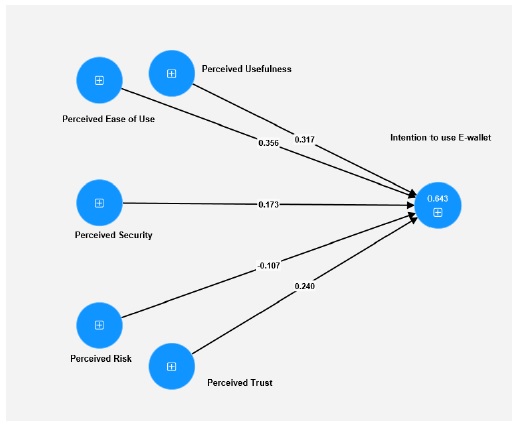Antecedents of E-wallet Usage Intention: An Empirical Study
DOI:
https://doi.org/10.31033/ijemr.13.6.19Keywords:
Perceived Ease of Use, Perceived Usefulness, Perceived Security, Perceived Trust, Perceived Risk, E-Wallets, Usage IntentionAbstract
Nowadays, the importance of cashless transactions is increasing due to the advancement of technology, especially in the post-pandemic era. An e-wallet is an application that helps users make payments through a mobile device instead of cash. With the advent of e-wallets, people are shifting from using cash to cashless in the era of smartphone technology. This study aims to explore the antecedent factors affecting the intention to use e-wallets as a payment mechanism among young adults in Kerala, India. The study was conducted by following an extended Technology Acceptance Model (TAM) and a Unified Theory of Acceptance and Use of Technology (UTAUT). Data were collected from 380 users of e-wallets, and the data were analyzed using partial least squares structural equation modelling (PLS-SEM) following a two-step approach. The results of the path analysis showed that perceived usefulness and perceived ease of use are the most significant predictors of usage intention for e-wallets, followed by perceived trust and perceived risk. It is also revealed that perceived security does not affect the usage intention of e-wallets. The results will help policymakers make strategic decisions considering customer perceptions of usage intentions.
Downloads

Downloads
Published
How to Cite
Issue
Section
License
Copyright (c) 2023 Dr Jobin Sahadevan

This work is licensed under a Creative Commons Attribution 4.0 International License.











